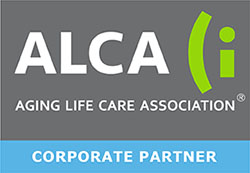When the Tax Cut and Jobs Act of 2017 was signed into law on December 22nd, the most significant change to the US tax code in more than thirty years, I expected a collective rejoicing among home care owners. Instead, confusion prevailed.
Although I’m not a Certified Public Accountant and nothing herein should be construed as tax advice, as home care acquisition intermediaries, our group works closely with CPAs in initiating and executing deals across the country. Now is the time to consult with yours to quantify your tax cut and ensure you’re organized in the most tax efficient manner possible. Meanwhile, I will endeavor to provide clarity around the fact that the vast majority of home care owners stand to benefit from the new tax law in the form of lower tax rates and higher business valuations.
It is clear that home care providers organized as “C” corporations will be benefactors of the permanent corporate tax rate reduction from 35% to 21%. Less clear is how home care providers organized as “S” corporations, LLCs, sole proprietors and partnerships will be impacted by the temporary (eight years) 20% tax deduction on Qualified Business Income that flows through to the owner’s personal tax returns.
As our succession planning clients know, the final return on their home care investment will be the sum total of the after tax income earned during ownership and the net capital gain achieved upon the sale of the business. While the law is subject to further clarification, as it stands now both of these investment variables will be positively impacted.
Specified Service Businesses: The confusion began when it was widely reported that certain service companies would not be eligible for the tax cuts. The law defines a Specified Service Business as health, law, consulting, athletics, financial services, brokerage services or any business where the principal asset is the reputation of one or more of its employees or owners.
This classification does not currently apply to home care providers. But in the unlikely event that were to change, only home care providers with annual taxable income that exceeds $315,000 if married filing jointly ($157,500 for single filers) would be ineligible for the deduction.
Qualified Business Income (QBI): As it stands today, the 20% federal tax deduction applies to the 2018 net income of home care providers organized as S corporations, LLCs, sole proprietors and partnerships. The tax deduction does not apply to reasonable W-2 wages that S Corporations or partnership owners pay themselves as compensation for running their companies. So in essence, 20% of a home care owner’s net income is now exempt from federal taxes to the extent the tax deduction does not exceed 50% of the provider’s total W-2 payroll. For example, a home care provider with annual revenue of $2,000,000 and an annual payroll of $1,300,000 would be eligible for the deduction up to $650,000 of net income. In other words, there is no limit. As the business grows, so does the tax deduction.
Example: To illustrate how it works, I pulled the 2017 tax returns of one of our sale clients formerly operating in the rural mid-west and asked Bill Kenedy of the Lutz CPA firm in Omaha to recalculate it under the new tax law. The key figures are as follows.
Total Income (Line 6): $2,000,000
Compensation of Officer (Line 7): $72,000
Salaries and Wages (Line 8) $1,228,000
Ordinary Business Income (Line 21) $200,000
For flow through entities, the actual business income tax rate depends on other variables of the tax filer including but not limited to household income, tax filing status (married or single) and the extent of the itemized deductions if any. Under a scenario in which this married tax filer’s only household income was his business income and assuming the standard deduction was taken, the Lutz CPA firm calculated a federal tax bill reduction of about one third, from $57,103 to $38,499. Since the 5% state income taxes paid on business income under this example is no longer deductible on federal returns, the more than $18,000 tax savings is offset by the discontinuance of a federal deduction for state income taxes of about $2,000.
With a reduced net tax bill of more than $16,000, this owner could either increase his ordinary business income by about 8% or pay incentive bonuses to key employees as has been recently announced by many US companies.
Since in this case the owner was selling his business, the tax savings was applied to 2018 projected net income increasing the enterprise value of the business by more than $100,000 from $950,000 to $1,060,000. This approximately 12% enterprise value increase was based on using an after tax targeted rate of return of 15% under the capitalization of after tax earnings, the most widely accepted valuation approach within the home care industry.
The Tax Cut and Jobs Act was designed to achieve economic growth by primarily benefiting job creating business owners and investors. The benefits to most home care owners are lower taxes and higher business valuations. Collectively, no other industry sector is creating more jobs than the US home care industry. Now is the time to fully understand your reward for doing so and to ensure you’re organized and prepared such that you can reap the full benefits.


